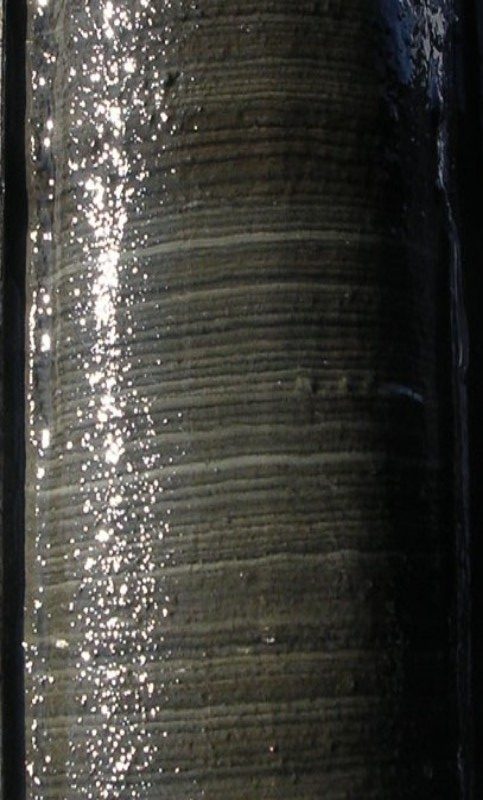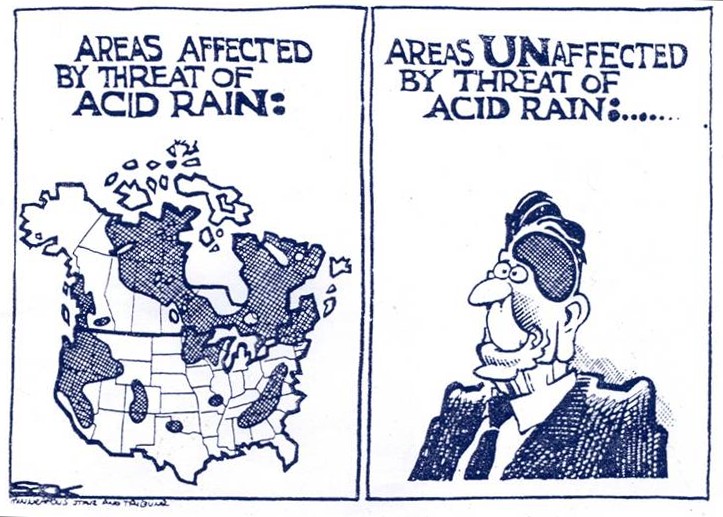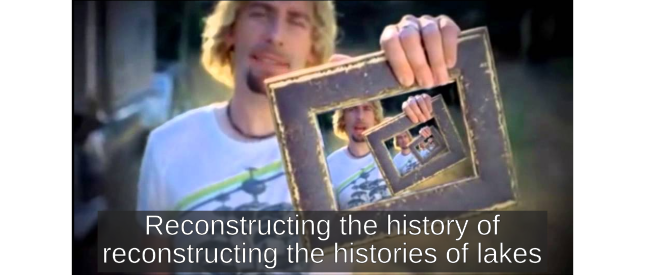“All have their worth and each contributes to the worth of the others” – John Ronald Reuel Tolkien
In the third episode of our series on the History of Paleolimnology we discuss how paleolimnology rapidly matured from a qualitative to a quantitative discipline. A transformation driven largely by advances in the methods used to date sediments combined with the increasing availability of computing power and multivariate statistics. Together these developments made paleolimnology capable of addressing a major environmental issue of the 1970s and 1980s, acid rain.
In paleolimnology, developing reliable chronologies for sediment sequences is essential to interpret changes through time. However, as we’ve discussed before, prior to the 1970s, it was only possible to obtain reliable dates for lakes with varved sediments, or on timescales of several thousand years using radiocarbon analyses.
A few key milestones in the analysis of varved lake sediments:
- By the early 20th century, Gerard De Geer and other Swedish researchers had recognized the similarity between varves and tree rings
- Nipkow (1927) – PhD thesis on diatoms within the varves from Lake Zürich
The ‘modernness’ of this thesis shocked us both, we have revised our nomination for the first modern paleolimnologist! - Bradley (1931) – Nonglacial marine varves
- Tippett (1964) – The annual nature of varves in Little Round Lake (Ontario)
- 1970s-1980s – Freeze coring techniques become more common and “tape peel” methods emerge to describe sub-annual changes in sediments
- Davidson (1988) – A tape-peel technique for preparing permanent slides
- Simola et al. (1990) – Seasonal dynamics of planktonic diatoms over 418 years!
- Progress continues from scotch tape to image analysis

However, not all lakes have varves. When varves are not present in the lake(s) of interest, chronological information can be obtained from radioisotopic analyses.
A few key milestones in the radioisotopic dating of lake sediments:
- Arnold and Libby (1949) – First use of carbon-14 for dating purposes (as 14C is not suitable for producing precise dates for samples that are only a few hundred years old, other radioisotopes are required to study changes since the Industrial Revolution)
- Krishnaswamy and Lal (1971) – First use of 210Pb to date lake sediments
- Robbins and Edgington (1975) – The Constant Initial Concentration (CIC) model
- Appleby and Oldfield (1978) – The Constant Rate of Supply (CRS) model
By the early-1980s, paleolimnological field, laboratory and dating techniques were ready to be applied to the burning environmental questions surrounding acid rain.
The relationship between acid rain and atmospheric pollution had been recognised by Robert Smith in the 1850s in studies of Manchester, England. However, acid rain didn’t emerge as an issue of concern for the general public of North America until the 1970s. This was partly due to a series of reports on the Hubbard Brook Experimental Forest in New Hampshire demonstrating the harmful environmental effects of acidic deposition. By the 1980s, acid rain was a highly political issue, with fundamental disagreements between environmentalists and industrial advocates regarding the baseline conditions of acidified lakes, and whether they were naturally acidic.

Long-term perspectives to answer questions such as:
- Had lakes acidified?
- If so, when and by how much? What was the cause?
- Had lakes lost fish populations due to acidification?
The key to ending the debates, was developing a method to reconstruct past pH levels with a high degree of certainty. Remember the pH function was only invented in 1909 (and finalised in 1924), so there are no long-term records of direct measurements that pre-date industrialisation. However, diatoms had already been identified as strong biological indicators and attempts to quantify diatom ecology with respect to pH began in the 1930s.
A few milestones from relating diatom communities to lakewater pH:
- Hustedt (1937-1939) – pH categories (acidobiontic/acidiophilic/indifferent/alkalaphilous/alkalabiontic)
- Nygaard (1956) – Diatom indexes
- Index α = (acid units) / (alkaline units)
- Index ω = (acid units) / # acid species
- Index ε = (alkaline units) / # alkaline species
- Meriläinen (1967) – Linear regression analysis between log Index α and measured pH
- Stockner (1972) – Attempts to relate diatom communities to eutrophication
- The nature of the multivariate diatom datasets began to attract statisticians to the problem
- Charles (1985) – A surface sediment diatom calibration set relating diatom assemblages to lakewater characteristics in 38 Adirondack lakes
By the mid-1980s, the various threads we’ve discussed so far (coring equipment, microfossil taxonomy, dating methods, statistical approaches, etc) were pulled together in major paleolimnological investigations designed to provide clear answers to the acid rain questions:
- Paleoecological Investigations of Recent Lake Acidification (PIRLA)
Charles and Whitehead (1986) - Surface Water Acidification Project (SWAP) Palaeolimnology Programme Battarbee and Renberg (1990)
- PIRLA II Charles and Smol (1990)
First use of ‘Top-Bottom’ approach for regional snapshot of change
Collectively, this work (along with many smaller studies) were able to definitively say that “Yes, lakes in softwater regions had acidified”. The amount they had acidified and the timing varied, but were closely related to local geology, wind patterns and proximity to industrial sources of SO2 and NOX emissions, and there had been widespread ecological consequences, including the loss of fish populations.
With these answers in hand, the political response was rapid. For example, in the USA amendments were made to the Clean Air Act in 1990 to better control acid deposition. Less than two decades after the first published attempt to use 210Pb to date lake sediments, paleolimnology had transformed into a quantitative discipline pivotal in addressing acid rain. With acid rain “solved”, and the paleolimnological toolset greatly expanded, paleolimnologists began to apply these techniques to many many more environmental issues, but we will discuss that next time.

